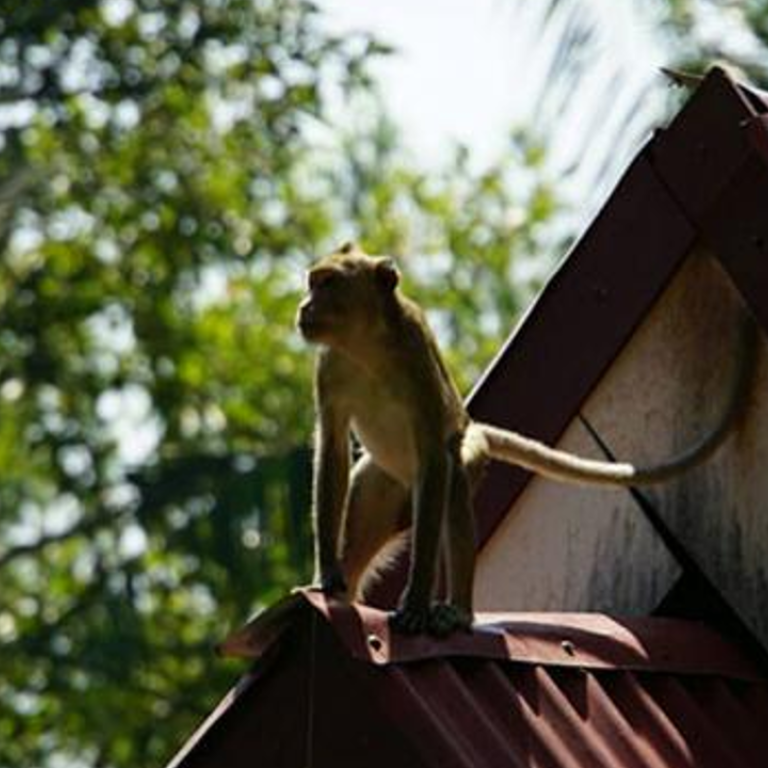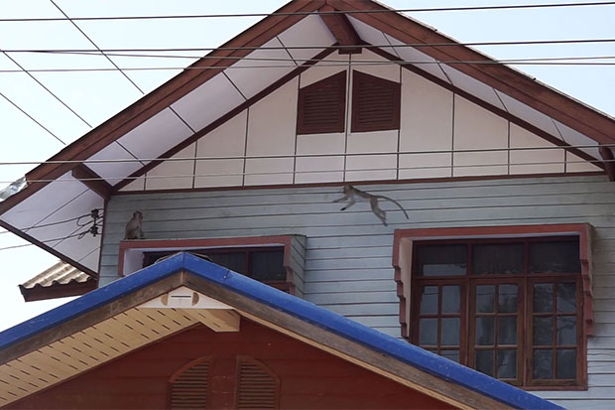
Horde of hungry monkeys plundering Thai villages and temple
Booming population and dwindling food supply has driven thousands of pesky primates into people’s homes
By Sanoh Worarak
More than 3,000 hungry monkeys are rampaging through houses and monks’ living quarters at two villages in Thailand’s Sisaket province.
Packs of wild long-tailed macaques are seen making their way along local roads at villages Moo 1 and Moo 11 every day.
Some aggressively invade homes in their search for food, forcing householders to stand guard, and to close windows and doors, to keep them out. Undeterred, the monkeys have managed to enter houses through ventilators in roofs.
They also raid the people’s crops.
The macaque population in tambon Muang Khaen has grown rapidly, causing problems for residents and also monks at the temple. The pesky simians now number over 3,000.
Thonglor Jaemsri, village head of Moo 11, said tribes of monkeys had lived in the area ever since human settlement, but their numbers then were not high. They existed on wild fruit and other natural foods.
But the macaque population had grown rapidly, and their food supply had been steadily depleted. This drove them to foraging for food around and inside the homes of the local people, Mr Thonglor said.
The hungry animals also invaded the living quarters of monks at Wat Ban Muang Khaem. The temple had begun giving them leftover food from offerings given during merit-making, but even that was not enough for them.
Although the monkeys had invaded their homes, the people had never assaulted them, he said. They wanted to conserve the animals so the area would become a tourist attraction.
The people simply needed the authorities to control the size of the macaque population, so they could live with them in harmony.

Householder Suwan Thaptim, 70, said the monkeys prowled in packs 100-200 strong. Most lived in nearby forests, and others at the temple.
Residents who forgot to close their windows would see their houses ransacked, with food stolen and their damaged belongings left scattered everwhere. Invading monkeys had even opened refrigerators and swept all the food inside onto the floor.
There were fights between competing troops of monkeys. They fought over food and chased one another to steal whatever they had looted. The roofs of their houses had become fighting arenas for these animals. Several roofs had been damaged.
Samnak Pupaboon, chairman of Muang Khaem tambon administration organisation, said the TAO normally set aside 35,000 baht a year to buy food to feed the monkeys. An annual buffet party was held for them every year. But no matter how much food they were given, it was never enough.
He wants provincial authorities to survey the monkey population and draw up measures to solve the problem, which also affects their farms. The monkey population must urgently be controlled, he said.



